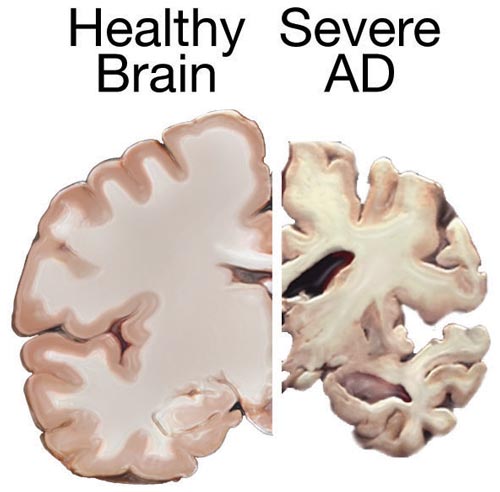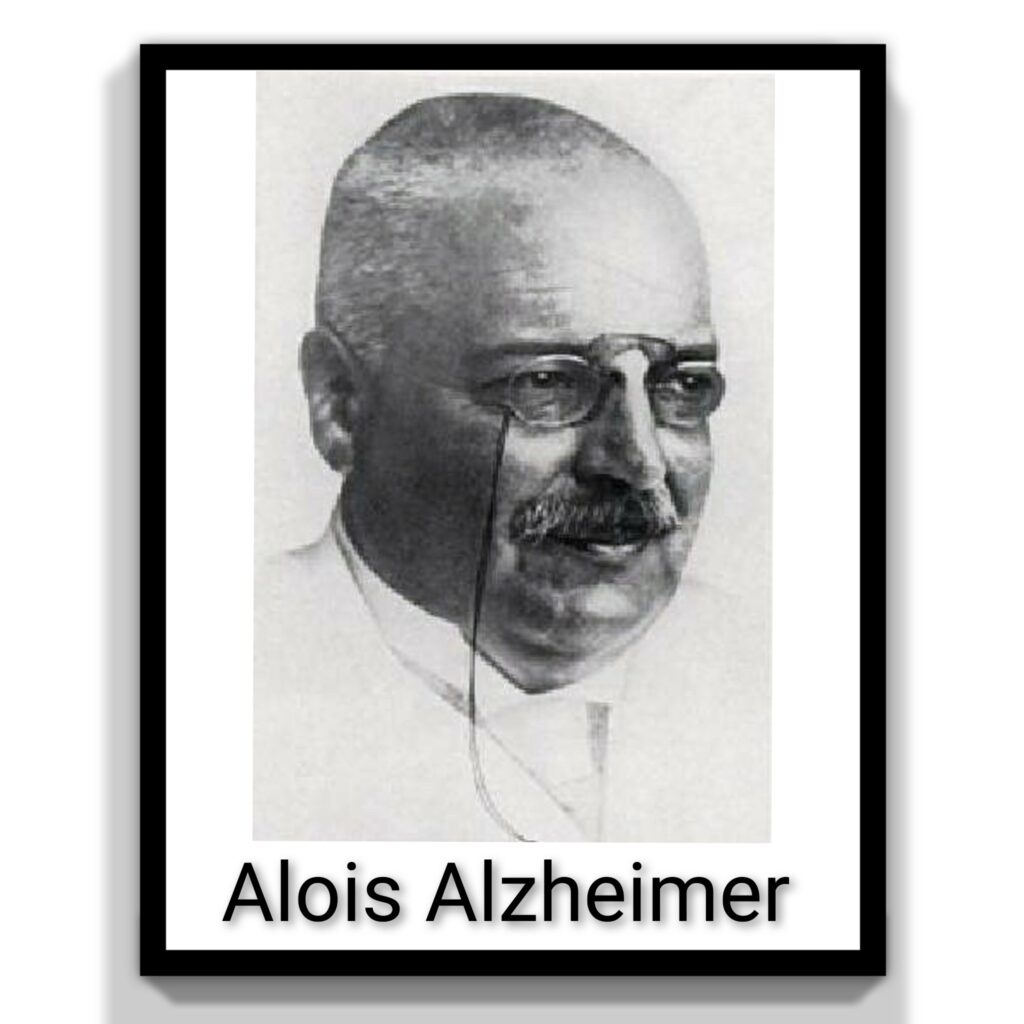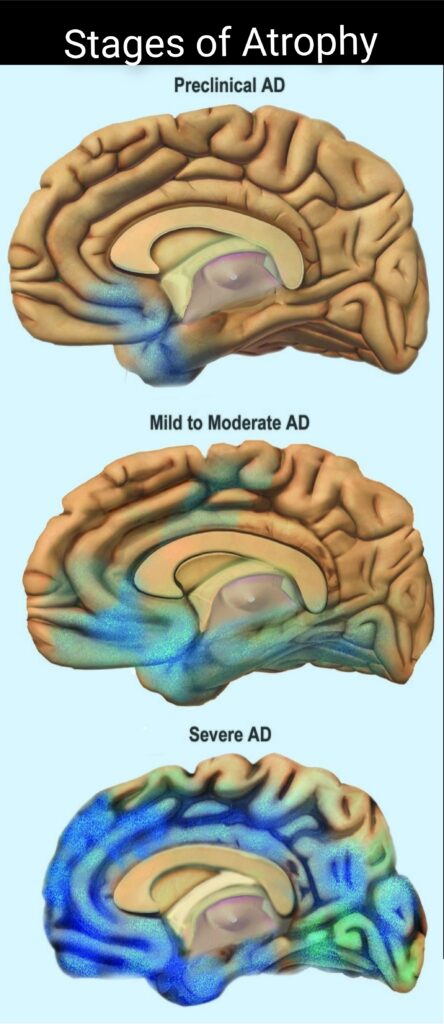A Brief Look at the “Thief of the Mind”
Alzheimer’s Disease — or “AD” is a chronic and progressive neurodegenerative disorder that destroys brain cells and causes memory and thinking ability to deteriorate over time.
Experiencing some memory loss is a normal feature of growing older that will eventually happen to many of us. If it starts to affect our day-to-day activities, however, it may be a sign of impending dementia.
Please understand that “dementia” is not a disease. Nor is it synonymous with Alzheimer’s. Rather, it’s a symptom of brain disorders which affect cognitive function. One of the primary contributors to dementia is Alzheimer’s Disease.

Image by National Institutes of Health – Public Domain
https://commons.wikimedia.org/w/index.php?curid=16969598
Prevalence
According to the World Health Organization, 60% to 70% of people with dementia have Alzheimer’s Disease. It is the leading cause of dementia among seniors. Currently, 6.5 million Americans over the age of 64 are living with Alzheimer’s. That’s almost 11% of those in that age bracket.

Public Domain via Wikimedia Commons
https://commons.wikimedia.org/w/index.php?curid=11653065
What’s In a Name?
Alzheimer’s Disease is named after Dr. Alois Alzheimer, a German psychiatrist and neurologist who first described the disease in 1906. He studied the brain of a woman who had died after showing symptoms of dementia and found unusual clumps of protein and twisted fibers in her brain. These abnormalities are now considered the hallmarks of
Alzheimer’s Disease. His colleague, Dr. Emil Kraepelin, later coined the term “Alzheimer’s Disease” in a psychiatric textbook in 1910.
Scientific Brain Stuff
Some limited shrinking of the brain is typical as we grow older, although with minimal loss of neurons. On the other hand, with Alzheimer’s Disease the damage is relatively widespread. Many of the brain’s neurons will completely stop functioning, lose their connections to other neurons, and ultimately die.
It begins in those parts of the brain related to memory, especially the entorhinal cortex and hippocampus. Eventually it reaches those areas in the cerebral cortex which affect language, reasoning, and social behavior. Once it spreads beyond those areas to the rest of the brain, the disease is ultimately fatal.
The Vascular Connection
Frequently, those with Alzheimer’s Disease and other forms of dementia also exhibit problems related to their blood vessels. These can include beta-amyloid deposits in the brain, hardening of the arteries and mini-strokes.
These vascular issues can lead to two specific problems: reduced flow of blood (and the oxygen it contains) to the brain; and, breakdown of the blood-brain barrier. This barrier — which is actually more like a filter — protects against circulating toxins or pathogens while allowing important things like oxygen, glucose and necessary nutrients to reach the brain.

https://commons.wikimedia.org/w/index.php?curid=4387759
In persons with Alzheimer’s, the blood-brain barrier malfunctions in such a way as to prevent glucose from reaching the brain and inhibiting the clearing away of toxic beta-amyloid and tau proteins. The result of this is inflammation, only adding to vascular problems in the brain.
As you might imagine, this is a highly complicated and destructive cycle to have going on in our brains.
The good news is that researchers in 2023 understand a lot more about this problem than they did 10 years ago, and new knowledge is gleaned every day. I’ll talk more about advances in science related to Alzheimer’s Disease in future “Health Matters” columns.
* * * * * * * * * * * * * * * * * * * *
So there you have it. Alzheimer’s is a fatal brain disease that mostly affects cognitive function in its early stages. It was identified more that a hundred years ago, and recent scientific advances have led to a better understanding of just what it does. Potential treatments or cures will be covered in the weeks ahead.
By Steven Roberts



